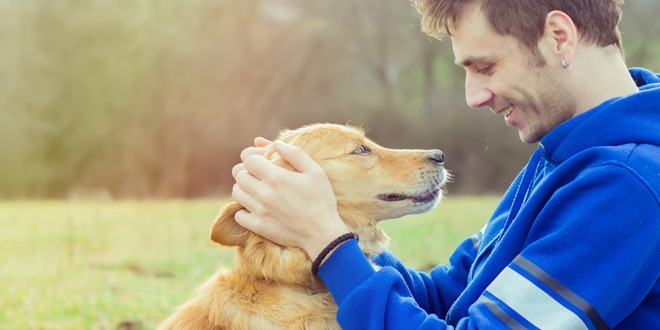For many years, dogs have been trained to help people with a disability or chronic illness, such as blindness or epilepsy. Recently, though, dogs have been trained to help people with diabetes who suffer from frequent and severe episodes of hypoglycemia (low blood sugar levels) or hyperglycemia (high blood sugar levels).
The dogs are trained to recognize visual and behavioural cues from their owners that signal blood glucose levels that are severely out of range. As well, they can be trained to seek a family member to help. In some cases, they can activate an ‘alert’ button to seek outside medical assistance.
Beyond visual and behavioural clues, scientists believe that dogs pick up on scents created by the chemical and metabolic changes that occur in a person’s body by using their powerful sense of smell: while humans have five to six million olfactory receptors, a dog has up to 220 million of them, producing a scenting ability that is 1,000 times more sensitive than that of humans. (The olfactory receptors in mammals are responsible for the recognition of compounds that have an odour.)
Hyperglycemia causes a person’s breath to become fruity smelling (many people liken it to the scent of nail polish remover or Juicy Fruit gum). While hypoglycemia isn’t generally associated with changes in breath odour, some people have reported that during episodes of severe hypoglycemia, they sweat profusely and the sweat is foul-smelling. It is believed that dogs may perceive these odours more quickly than humans do, and alert their owners to altered blood glucose levels.
Researchers in the United Kingdom recently studied a chemical called isoprene and its relationship to hypoglycemia. The breath of women with type 1 diabetes was studied by a team at the University of Cambridge and the findings were published in the journal Diabetes Care. The research team used controlled conditions to gradually lower participants’ blood sugar levels and discovered high levels of isoprene in those who were experiencing a hypoglycemic episode. Isoprene is one of the most common natural chemicals found in human breath, but its scent cannot be detected by humans. The researchers believe that dogs can smell this chemical, which in turn may help them to detect episodes of hypoglycemia in humans.
The ability of dogs to detect and react to hypoglycemic episodes helps their owners avoid loss of consciousness and other life-threatening effects. Ultimately, these specially trained dogs are able to provide increased safety, security and independence for people with diabetes who suffer from severe episodes of hyperglycemia or hypoglycemia.
| In Canada, the Lions Foundation’s Dog Guides program provides diabetes assistance dogs at no cost to eligible applicants. For more information, and to download an application, click here. |
 Diabetes Care Community Learn, connect and care
Diabetes Care Community Learn, connect and care




